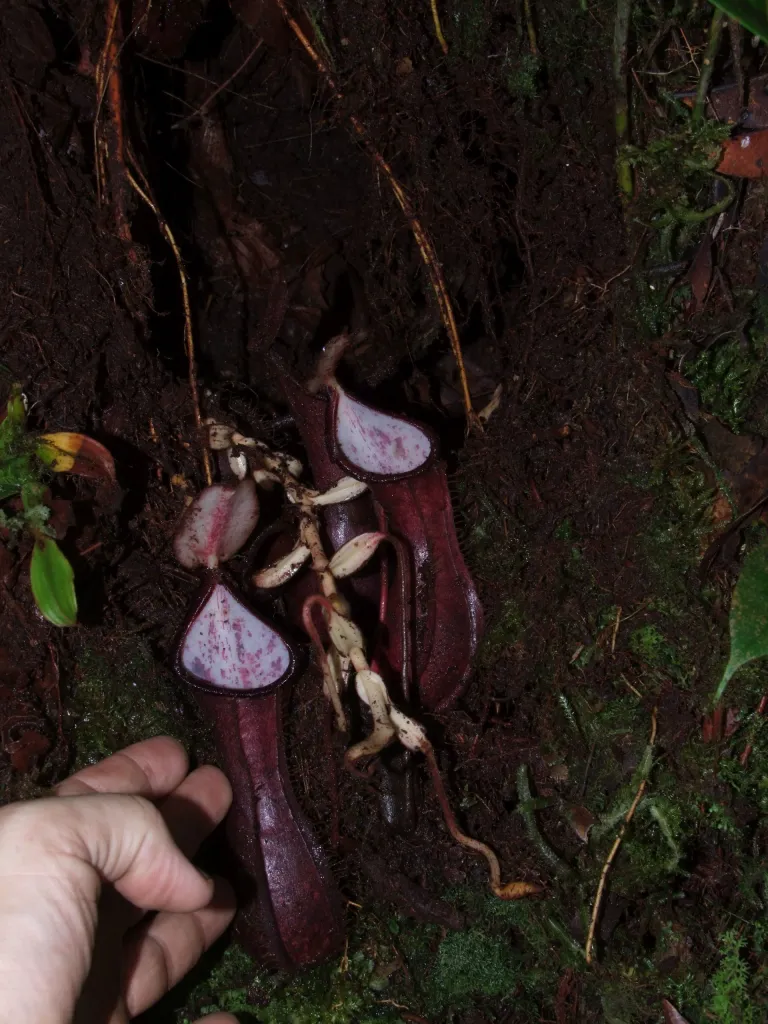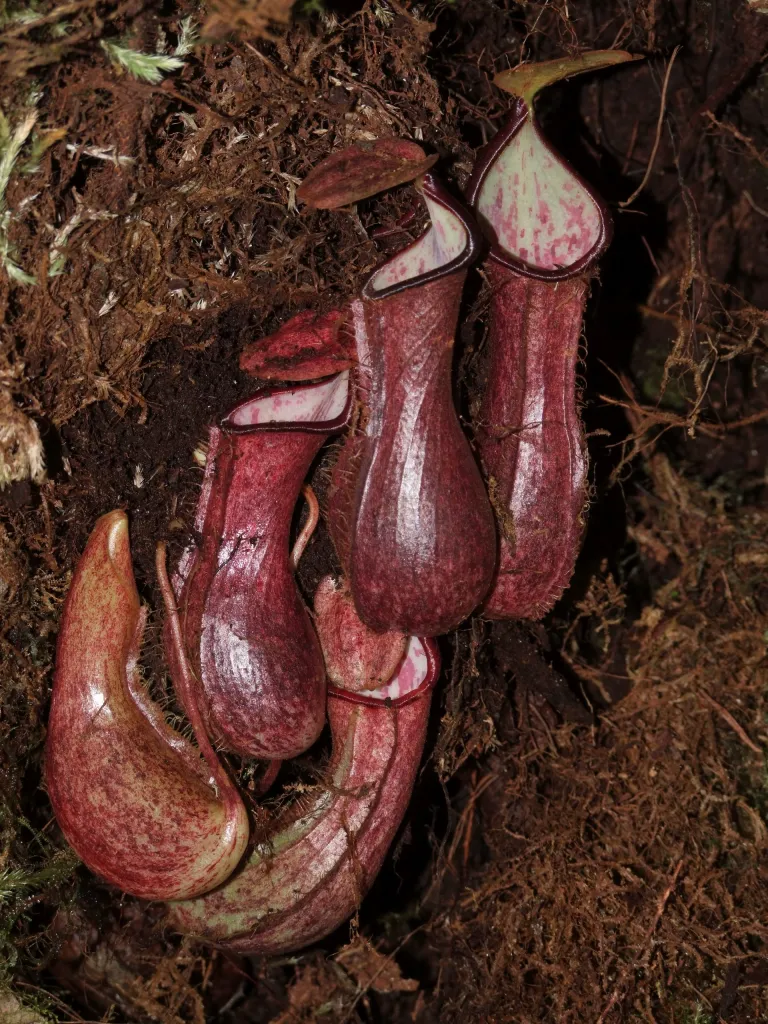
We’re used to viewing plants as food for many different types of pollinating insects, grazing animals, and veggie-loving humans. That’s true for the most part, but in low-nutrient environments, some plants have found a bizarre adaptation: they have become predators. Carnivorous plants such as the Venus flytrap are simply some of the most fascinating living things in the world, and a new study just made them a whole lot more interesting.
Martin Dančák of Palacký University in Olomouc in the Czech Republic found a new carnivorous plant species in the rainforest of North Kalimantan, an island of Borneo. Named Nepenthes pudica, the plant has leaves that guide tiny insects and other small prey towards a deep cavity known as a pitfall trap. It’s basically a pitcher plant.
But unlike the two dozen other species of pitcher plants that grow in sunny open wetlands, this new carnivorous plant lives a life underground, catching prey in the soil.
“This species places its up-to-11-cm-long pitchers underground, where they are formed in cavities or directly in the soil and trap animals living underground, usually ants, mites, and beetles,” Dančák said.

Only three other known carnivorous plants dwell below the soil, but they all employ radically different prey-capturing mechanisms. Its leaves and shoots are tiny and white because, you’ve guessed it, they don’t have chlorophyll. There’s not much use for this pigment when you don’t get sunshine. However, the pitcher itself retains the size and shape seen in other members of the Nepenthes genus, as well as the reddish color.
When they dissected the pitchers of some specimens, the biologists found mosquito larvae, nematodes, and even a new species of worm that was not known to science before. Talk about a combo!
It’s not clear why this particular species decided to go underground when its cousins enjoy basking in the sun, but altitude may play a role. The plant grows at elevations exceeding 1,100 meters (3,600 feet), and it may have adapted to life in underground cavities because it’s wetter than above ground. Presumably, there are also more opportunities for predation during dry periods.
And like many interesting discoveries in science, there’s also an inspiring backstory. Nepenthes pudica was found completely by accident while the Czech biologists were trekking through a previously unexplored mountain where they came across a number of pitchers, including a peculiar specimen protruding from the soil.
“At first, we thought it was an accidentally buried pitcher and that local environmental conditions had caused the lack of other pitchers. Still, as we continued to find other pitcherless plants along the ascent to the summit, we wondered if a species of pitcher plant might have evolved towards loss of carnivory, as seen in some other carnivorous plants. But then, when taking photos, I tore a moss cushion from a tree base revealing a bunch of richly maroon-coloured pitchers growing from a short shoot with reduced leaves entirely lacking chlorophyll,” said co-author Ľuboš Majeský of Palacký University Olomouc.
When they looked closer, they found other plants, all of which had underground shoots with pitchers. That’s when they knew they had found a completely new species of pitcher plant.
But even if it likes to stay hidden, it could still use our help. Approximately 20% of carnivorous plant species are threatened worldwide. Key threats include habitat degradation and loss, altered fire regimes or hydrology, and collection of plants for trade.
“This discovery is important for nature conservation in Indonesian Borneo, as it emphasises its significance as a world biodiversity hotspot. We hope that the discovery of this unique carnivorous plant might help protect Bornean rainforests, especially prevent or at least slow the conversion of pristine forests into oil palm plantations”, concludes Wewin Tjiasmanto of Yayasan Konservasi Biota Lahan Basah, who helped discover the new species.
The findings were documented in the journal PhytoKeys.






